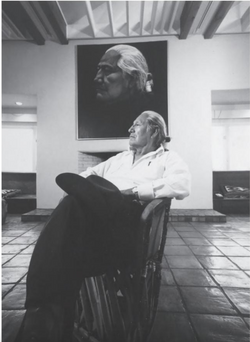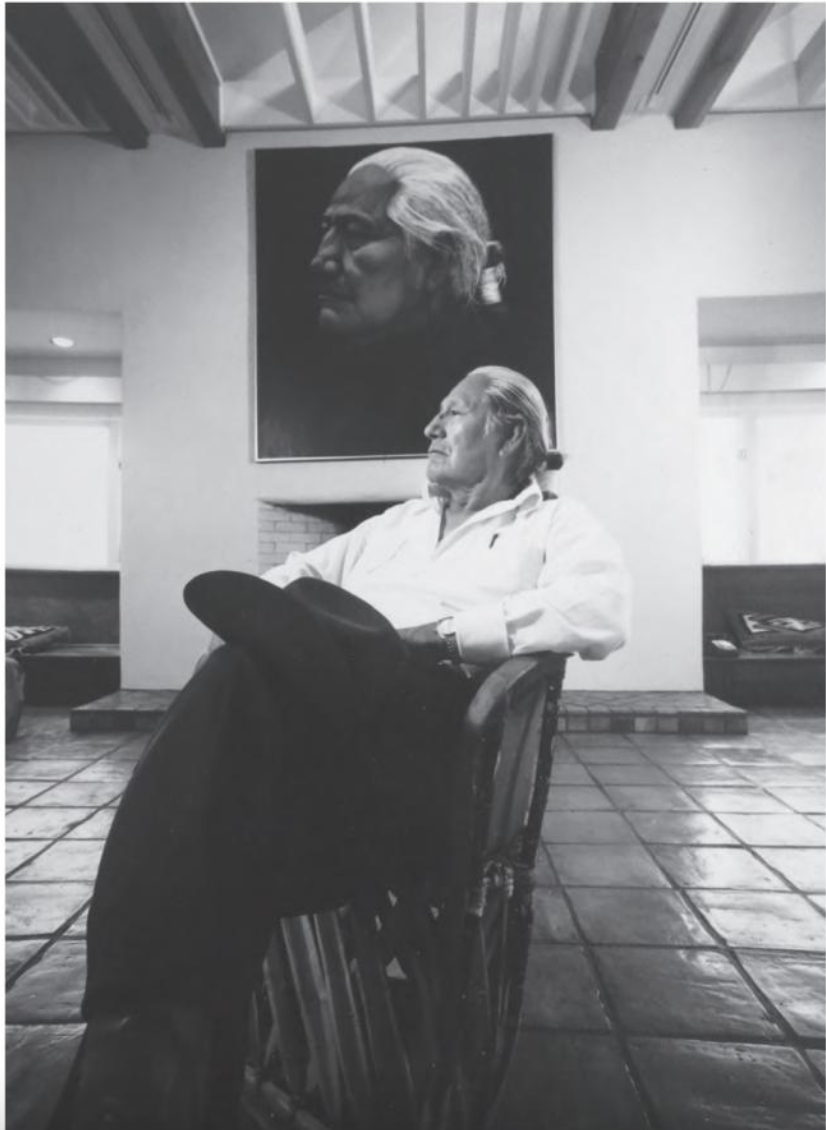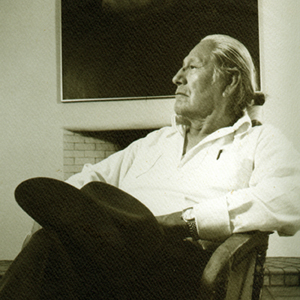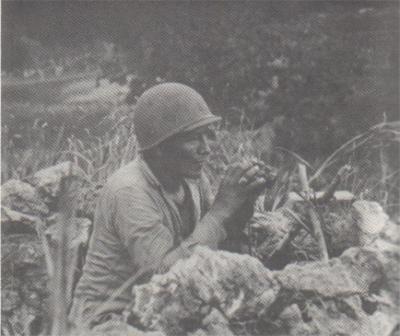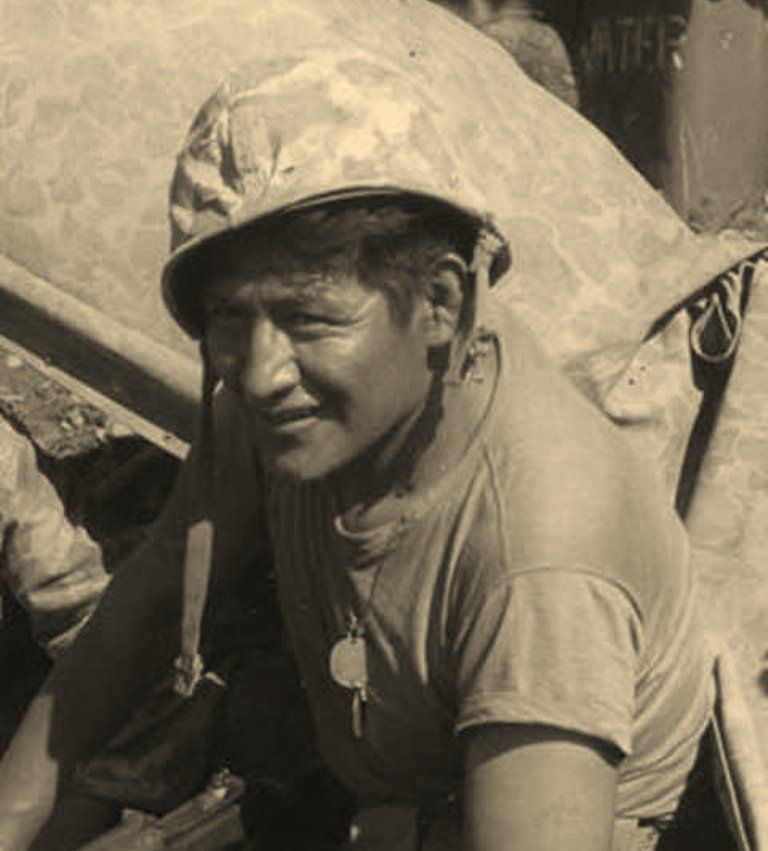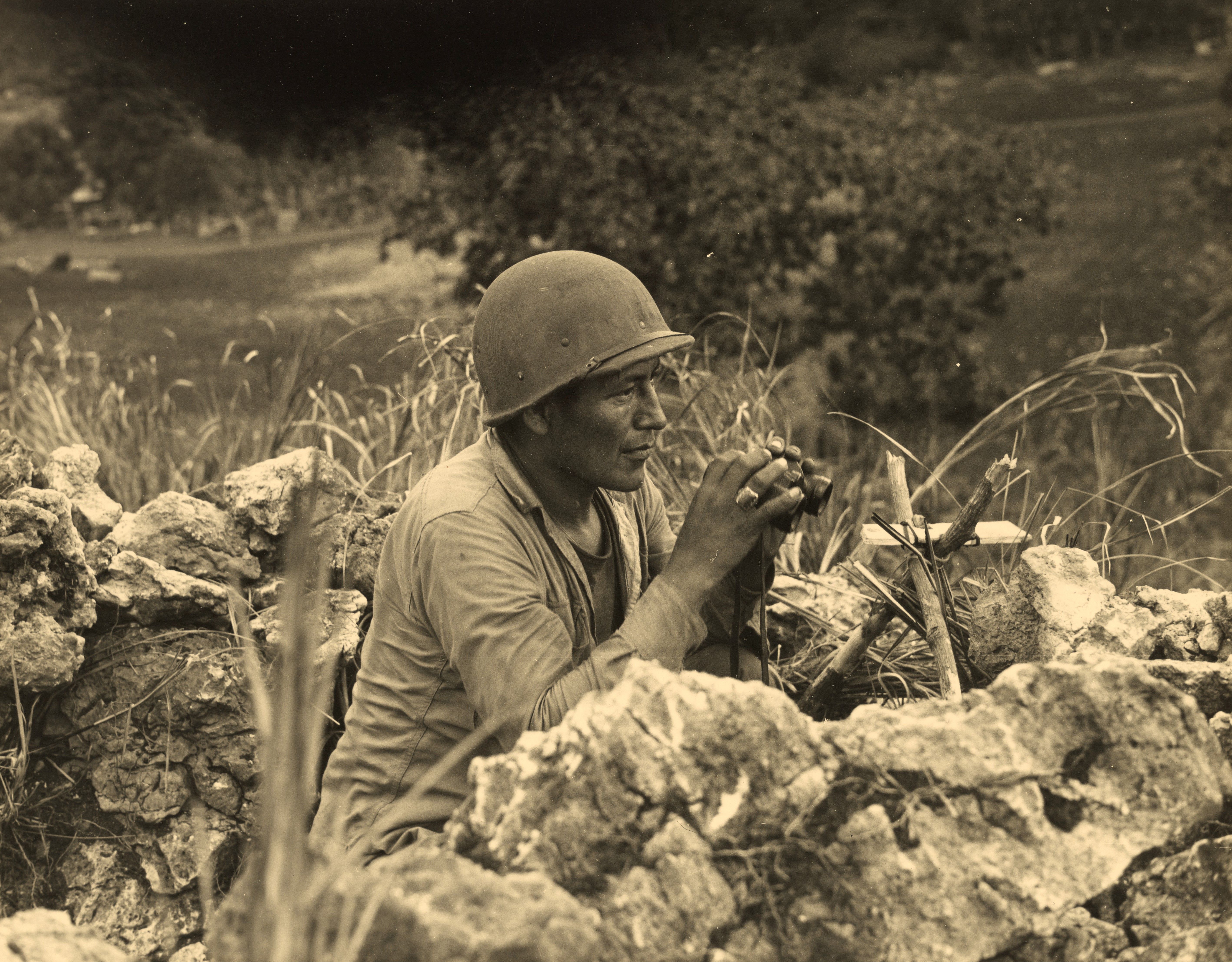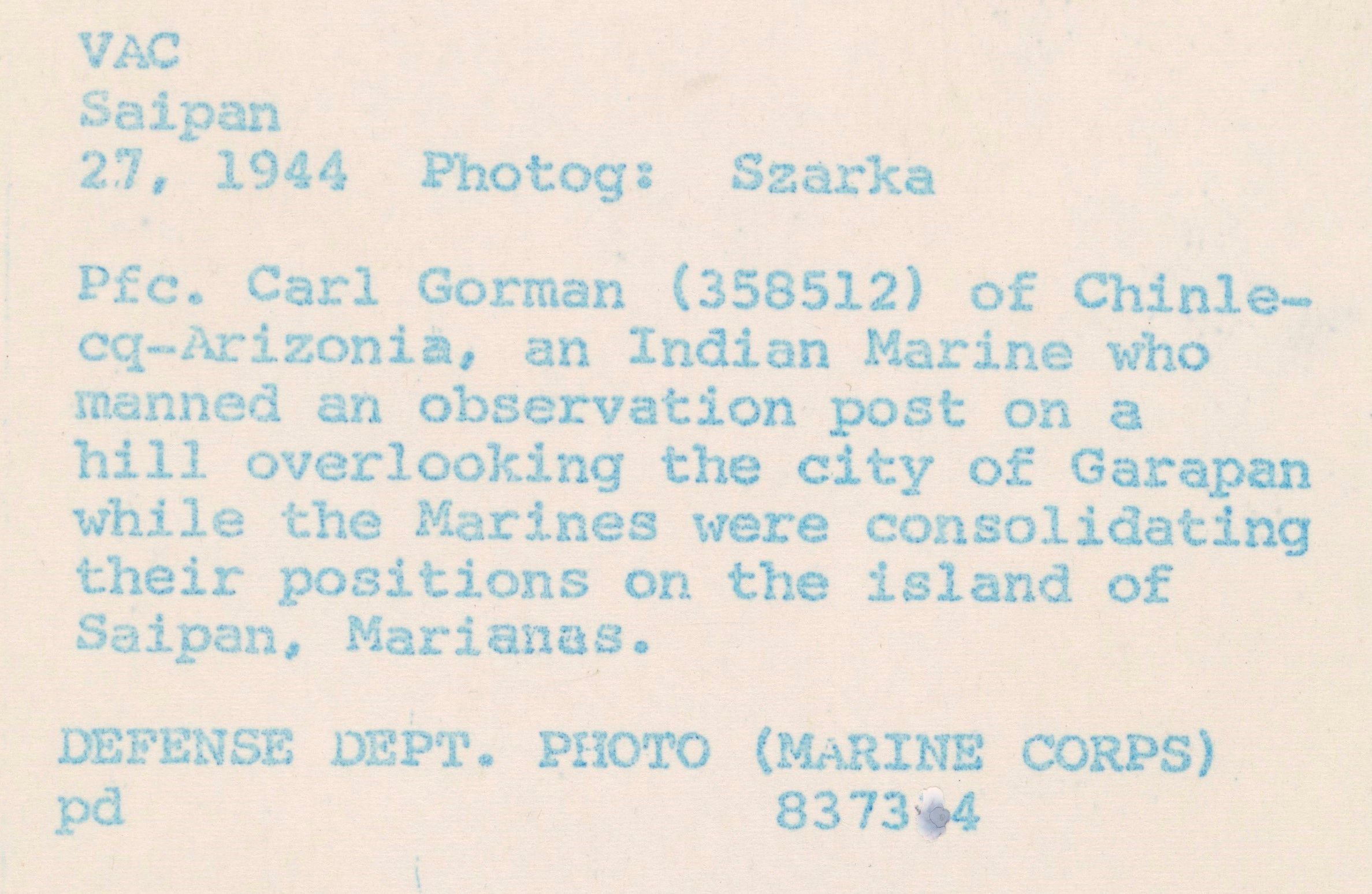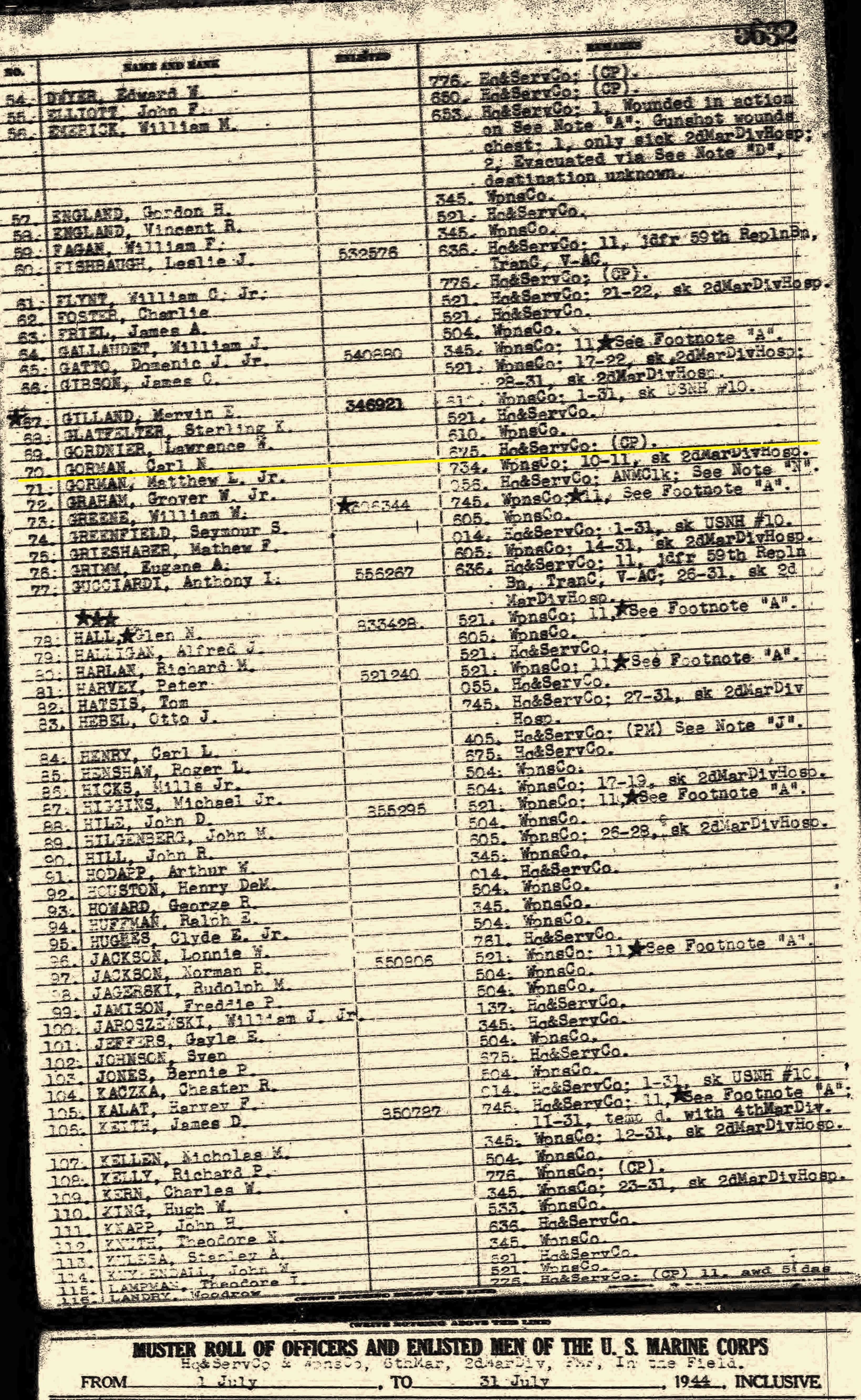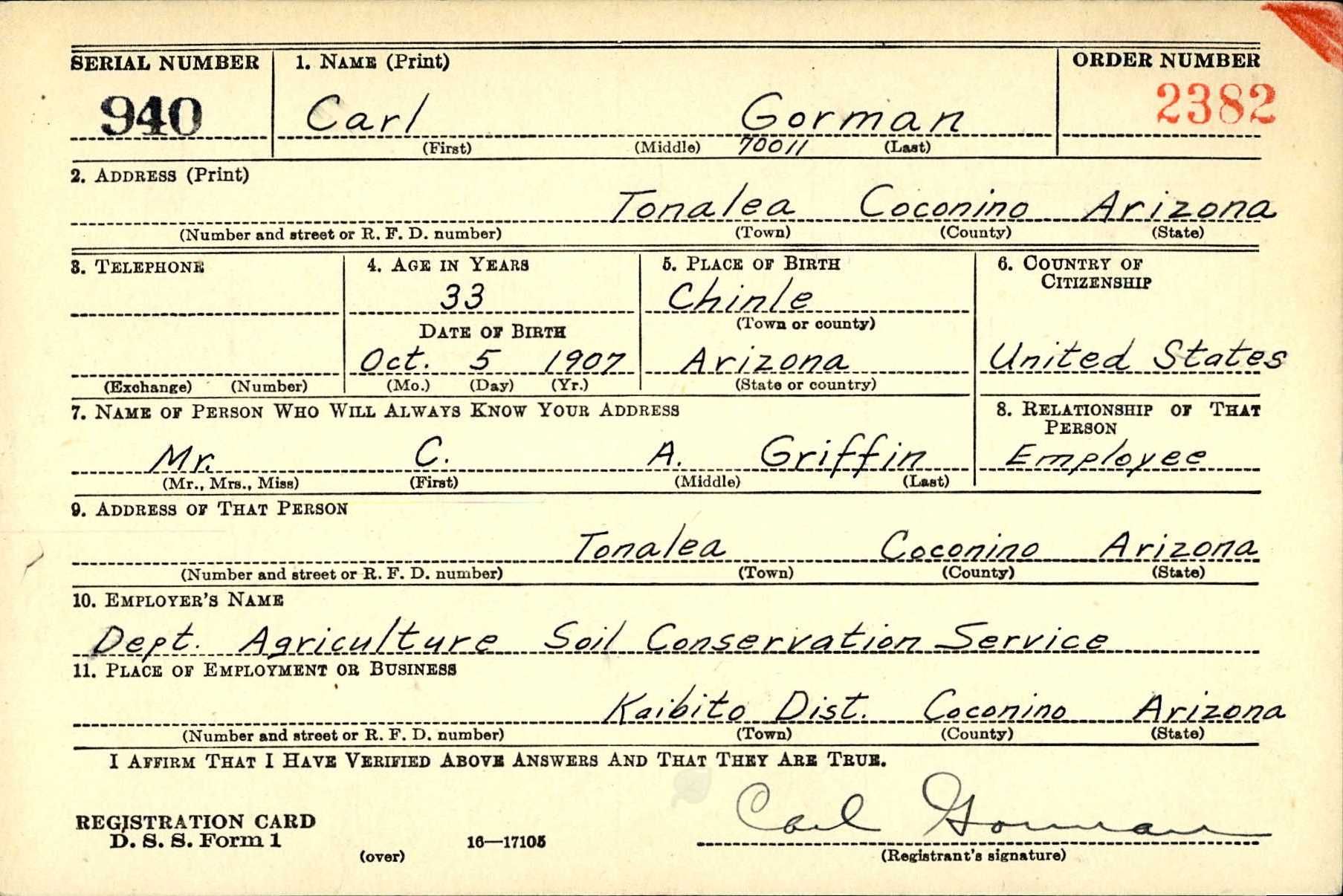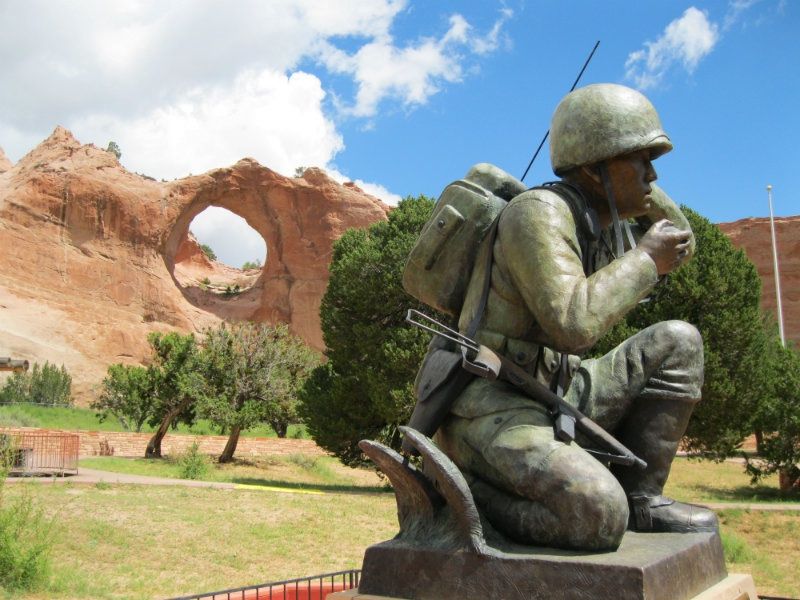He was inducted into the Marine Corps during World War II, and was member of the first 29 Navajo code Talkers who developed the Navajo Code. He served in four Pacific campaigns.
Wife Mary Wilson Gorman of Gallup
Parents Nelson Carl and Alice Peshlakai Gorman
His NAVAJO NAME is Kin-Ya-Onny-Beyeh
-----------------------------------
South Florida Sun-Sentinel (Fort Lauderdale, FL) - February 2, 1998
Deceased Name: CARL A. GORMAN , WW II NAVAJO CODE TALKER
Carl A. Gorman, one of the original Navajo Code Talkers of World War II and later a renowned artist and lecturer, died Thursday after a long illness.
He was 90.
Mr. Gorman, the father of noted artist R.C. Gorman, was a rock-jawed man of many talents and a wry sense of humor. He delighted in the belated public acclaim the Code Talkers began receiving in the 1970s and served as president of the Navajo Code Talkers Association.
Mr. Gorman was born in 1907 on the Navajo Reservation in Chinle, where his father was a cattleman and a trader. His mother was an accomplished weaver who also worked with Presbyterian missionaries to translate religious hymns into Navajo.
This bicultural setting prepared Mr. Gorman for his lifelong work as an interpreter between Navajo and Anglo cultures.
Mr. Gorman was 34 in 1942 when the Marines began recruiting young Navajos for training as Code Talkers, an idea that began with a son of Presbyterian missionaries to the Navajos. Mr. Gorman signed on immediately.
He did it by lying about his age, then went on to help design the code that baffled Japanese cryptographers.
On such islands as Tinian and Iwo Jima, teams of Code Talkers helped coordinate movements of U.S. troops and ships.
"Many people ask me why I fought for my country when the government has treated us pretty bad," Mr. Gorman said in Flagstaff in 1995, at the unveiling of a monument to the Code Talkers.
"But before the White man came to this country, this whole land was Indian country, and we still think it's our land, so we fight for it. I was very proud to serve my country." After the war, Mr. Gorman used the GI Bill to study at the Otis Art Institute in Los Angeles and was later a technical illustrator for Douglas Aircraft. He also founded a silk-screen design company and taught Indian art at the University of California at Davis.
Last year, as his health failed, he and his wife, Mary, moved to Gallup, N.M., to be closer to medical treatment.
Besides his wife and son, survivors include two daughters, Zonnie Gorman of Gallup and Donna Scott of Chinle; and three grandchildren, all of Gallup.
Services are planned for today at Sacred Heart Catholic Cathedral in Gallup.
He was inducted into the Marine Corps during World War II, and was member of the first 29 Navajo code Talkers who developed the Navajo Code. He served in four Pacific campaigns.
Wife Mary Wilson Gorman of Gallup
Parents Nelson Carl and Alice Peshlakai Gorman
His NAVAJO NAME is Kin-Ya-Onny-Beyeh
-----------------------------------
South Florida Sun-Sentinel (Fort Lauderdale, FL) - February 2, 1998
Deceased Name: CARL A. GORMAN , WW II NAVAJO CODE TALKER
Carl A. Gorman, one of the original Navajo Code Talkers of World War II and later a renowned artist and lecturer, died Thursday after a long illness.
He was 90.
Mr. Gorman, the father of noted artist R.C. Gorman, was a rock-jawed man of many talents and a wry sense of humor. He delighted in the belated public acclaim the Code Talkers began receiving in the 1970s and served as president of the Navajo Code Talkers Association.
Mr. Gorman was born in 1907 on the Navajo Reservation in Chinle, where his father was a cattleman and a trader. His mother was an accomplished weaver who also worked with Presbyterian missionaries to translate religious hymns into Navajo.
This bicultural setting prepared Mr. Gorman for his lifelong work as an interpreter between Navajo and Anglo cultures.
Mr. Gorman was 34 in 1942 when the Marines began recruiting young Navajos for training as Code Talkers, an idea that began with a son of Presbyterian missionaries to the Navajos. Mr. Gorman signed on immediately.
He did it by lying about his age, then went on to help design the code that baffled Japanese cryptographers.
On such islands as Tinian and Iwo Jima, teams of Code Talkers helped coordinate movements of U.S. troops and ships.
"Many people ask me why I fought for my country when the government has treated us pretty bad," Mr. Gorman said in Flagstaff in 1995, at the unveiling of a monument to the Code Talkers.
"But before the White man came to this country, this whole land was Indian country, and we still think it's our land, so we fight for it. I was very proud to serve my country." After the war, Mr. Gorman used the GI Bill to study at the Otis Art Institute in Los Angeles and was later a technical illustrator for Douglas Aircraft. He also founded a silk-screen design company and taught Indian art at the University of California at Davis.
Last year, as his health failed, he and his wife, Mary, moved to Gallup, N.M., to be closer to medical treatment.
Besides his wife and son, survivors include two daughters, Zonnie Gorman of Gallup and Donna Scott of Chinle; and three grandchildren, all of Gallup.
Services are planned for today at Sacred Heart Catholic Cathedral in Gallup.
